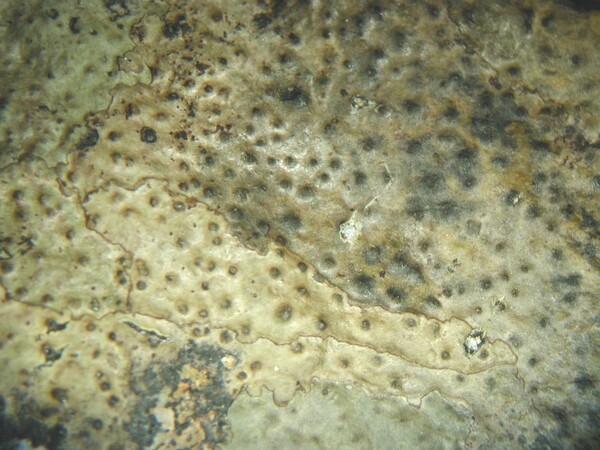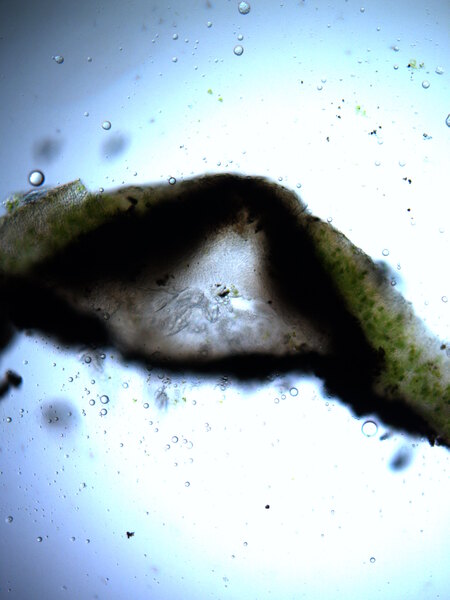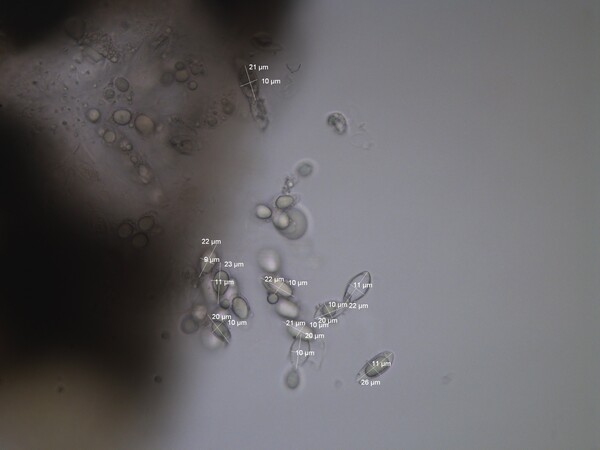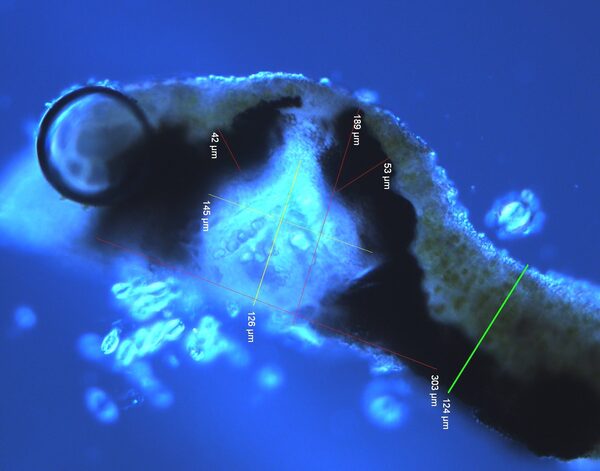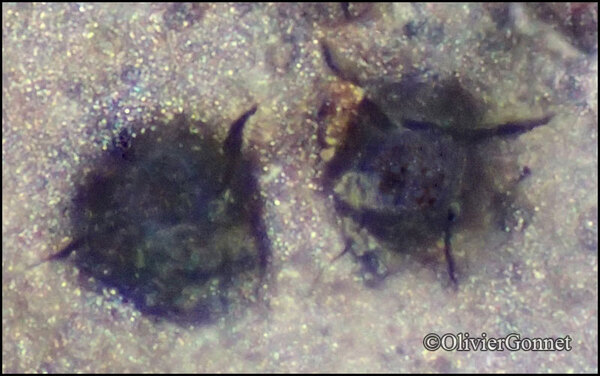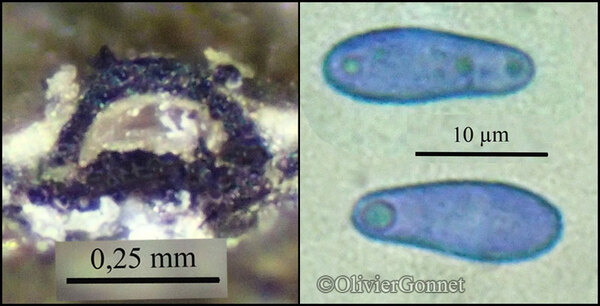Verrucaria funckii (Spreng.) Zahlbr.
Cat. Lich. Univ., 1: 41, 1921. Basionym: Pyrenula funckii Spreng. - Crypt. Gew., 32: 5, 1826.
Synonyms: Verrucaria elaeomelaena f. silicicola Zschacke; Verrucaria silicea Servít
Distribution: N - TAA (Nascimbene & al. 2007b, 2022, Thüs & al. 2015). C - Sar (Herb. Nascimbene 4377).
Description: Thallus crustose, episubstratic, smooth, continuous or with a few cracks, subgelatinous when wet, pale grey-green to brown (often turning orange-brown in the herbarium) when dry, greenish and often transparent when wet, 50-250 μm thick, delimited by a thin whitish prothallus from the rock, or by dark lines from conspecific thalli. Cortex poorly developed, 10-15 μm thick, with a yellowish brown pigment in sun-forms, colourless in shade-forms; algal layer 70-120 μm thick; medulla paraplectenchymatous, the cells arranged in columns, with a well-visible and usually continuous black basal layer formed by neighbouring involucrella. Perithecia almost completely covered by a thalline layer, not projecting or forming shallowly conical, 0.3-0.6 mm wide projections. Involucrellum 15-20 μm thick, red-brown and K+ grey, distinctly conical, reaching to base-level and often diverging from exciple in lower part. the space between involucrellum and exciple occupied by pigmented cells; exciple 0.18-0.4 mm across, the wall colourless except around the ostiole; hamathecium of 17-25 μm long periphyses and periphysoids, interascal filaments absent; hymenial gel hemiamyloid, I+ red (I+ blue at very low concentrations of I), K/I+ blue. Asci 8-spored, clavate, I-, fissitunicate, the wall thickened above, with an ocular chamber, dehiscent by extrusion of an endotunica to form a delicate rostrum, Verrucaria-type. Ascospores 1-celled, hyaline, ellipsoid to narrowly ellipsoid, (17-)22-26(-28.5) x (7-)8-11(-13) μm, at least some of them surrounded by a 0.5(-2) μm thick, gelatinous perispore. Photobiont chlorococcoid, the cells arranged in vertical columns. Spot tests: K-, C-, KC-, P-, UV-. Chemistry: without lichen substances.
Note: among freshwater Verrucariaceae, this is one of the few species which are usually found in permanently submerged conditions, more rarely in the splash zone of water courses or on deeply shaded stream banks, always on siliceous substrata. It is a typical element of springs and clear headwaters, where it can dominate the benthic community. Probably much more widespread in the Alps.
Growth form: Crustose
Substrata: rocks
Photobiont: green algae other than Trentepohlia
Reproductive strategy: mainly sexual
Periodically submerged (e.g. in creeks)
Commonnes-rarity: (info)
Alpine belt: very rare
Subalpine belt: rare
Oromediterranean belt: very rare
Montane belt: very rare
Submediterranean belt: absent
Padanian area: absent
Humid submediterranean belt: absent
Humid mediterranean belt: absent
Dry mediterranean belt: absent
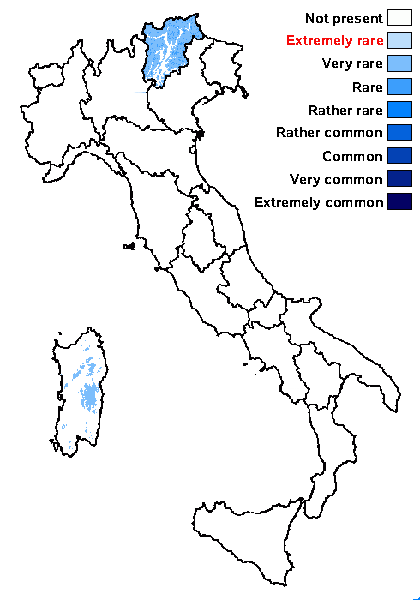
Predictive model
Herbarium samples


Juri Nascimbene - CC BY-SA 4.0; Owner: ITALIC - Dyades Project - Dept. of Life Sciences, University of Trieste
Italy, Sardinia
2014
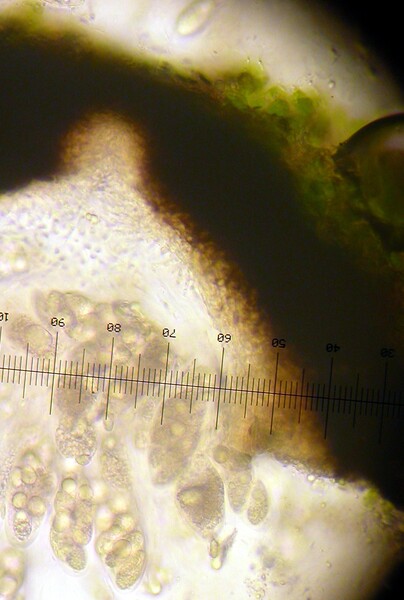

Juri Nascimbene - CC BY-SA 4.0; Owner: ITALIC - Dyades Project - Dept. of Life Sciences, University of Trieste
Italy, Sardinia
2014
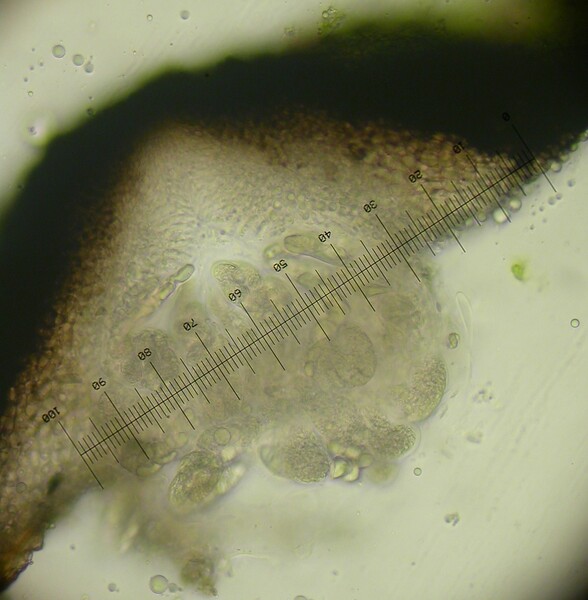

Juri Nascimbene - CC BY-SA 4.0; Owner: ITALIC - Dyades Project - Dept. of Life Sciences, University of Trieste
Italy, Sardinia
2014
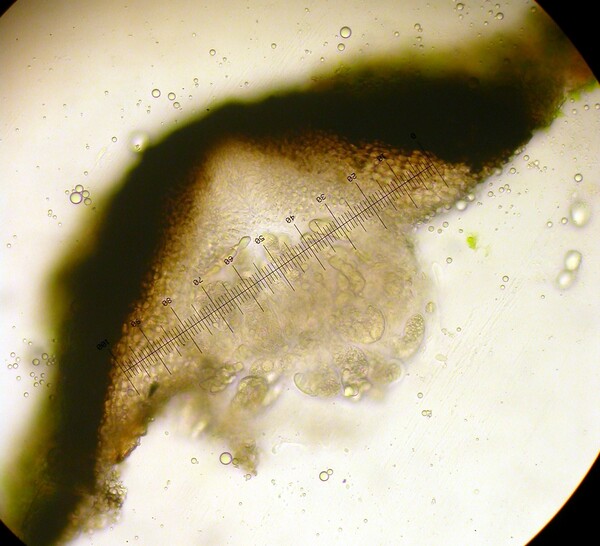

Juri Nascimbene - CC BY-SA 4.0; Owner: ITALIC - Dyades Project - Dept. of Life Sciences, University of Trieste
Italy, Sardinia
2014
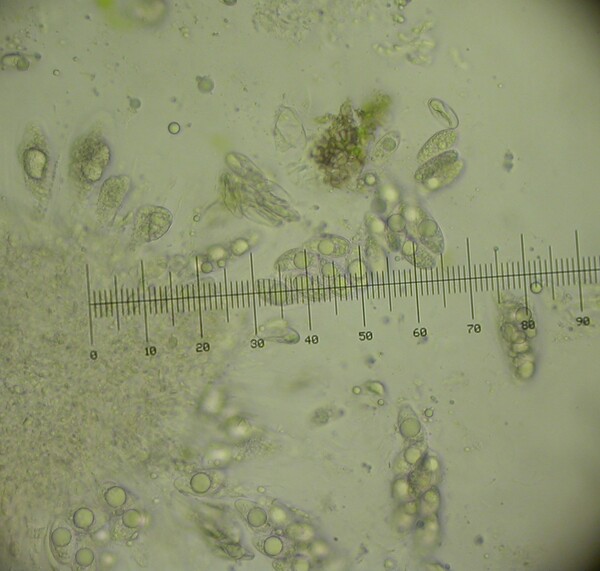

Juri Nascimbene - CC BY-SA 4.0; Owner: ITALIC - Dyades Project - Dept. of Life Sciences, University of Trieste
Italy, Sardinia
2014
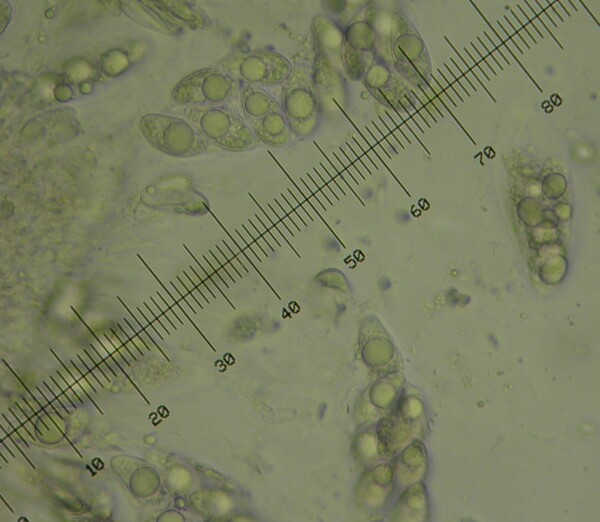

Juri Nascimbene - CC BY-SA 4.0; Owner: ITALIC - Dyades Project - Dept. of Life Sciences, University of Trieste
Italy, Sardinia
2014
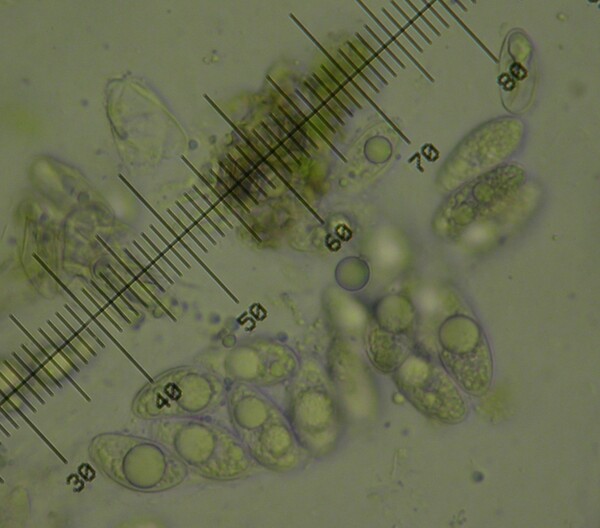

Juri Nascimbene - CC BY-SA 4.0; Owner: ITALIC - Dyades Project - Dept. of Life Sciences, University of Trieste
Italy, Sardinia
2014
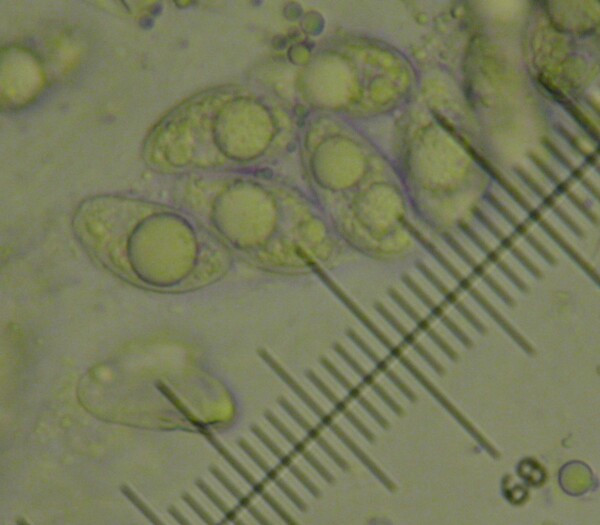

Juri Nascimbene - CC BY-SA 4.0; Owner: ITALIC - Dyades Project - Dept. of Life Sciences, University of Trieste
Italy, Sardinia
2014
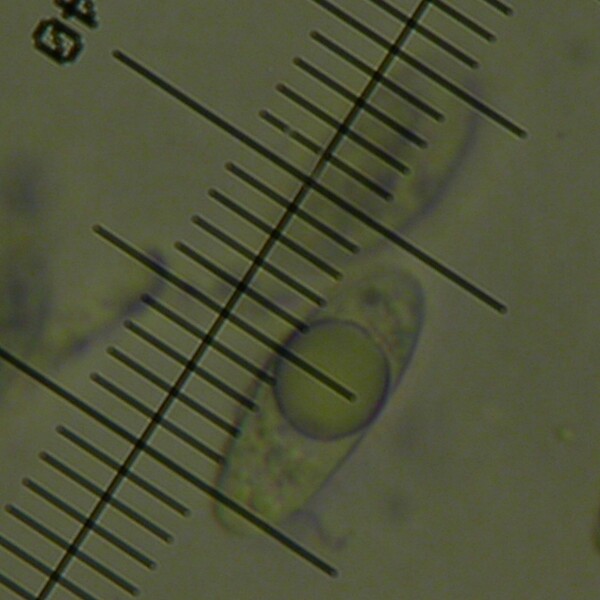

Juri Nascimbene - CC BY-SA 4.0; Owner: ITALIC - Dyades Project - Dept. of Life Sciences, University of Trieste
Italy, Sardinia
2014

Courtesy Danièle et Olivier Gonnet - Source: https://www.afl-lichenologie.fr/Photos_AFL/Photos_AFL_V/Texte_V/Verrucaria_funckii.htm
France, 4/10/2011 - Asco - sous le lac d’Argent, 2100 m - Corse
Growth form: Crustose
Substrata: rocks
Photobiont: green algae other than Trentepohlia
Reproductive strategy: mainly sexual
Periodically submerged (e.g. in creeks)
Commonnes-rarity: (info)
Alpine belt: very rare
Subalpine belt: rare
Oromediterranean belt: very rare
Montane belt: very rare
Submediterranean belt: absent
Padanian area: absent
Humid submediterranean belt: absent
Humid mediterranean belt: absent
Dry mediterranean belt: absent

Predictive model
| Herbarium samples |


Juri Nascimbene - CC BY-SA 4.0; Owner: ITALIC - Dyades Project - Dept. of Life Sciences, University of Trieste
Italy, Sardinia
2014


Juri Nascimbene - CC BY-SA 4.0; Owner: ITALIC - Dyades Project - Dept. of Life Sciences, University of Trieste
Italy, Sardinia
2014


Juri Nascimbene - CC BY-SA 4.0; Owner: ITALIC - Dyades Project - Dept. of Life Sciences, University of Trieste
Italy, Sardinia
2014


Juri Nascimbene - CC BY-SA 4.0; Owner: ITALIC - Dyades Project - Dept. of Life Sciences, University of Trieste
Italy, Sardinia
2014


Juri Nascimbene - CC BY-SA 4.0; Owner: ITALIC - Dyades Project - Dept. of Life Sciences, University of Trieste
Italy, Sardinia
2014


Juri Nascimbene - CC BY-SA 4.0; Owner: ITALIC - Dyades Project - Dept. of Life Sciences, University of Trieste
Italy, Sardinia
2014


Juri Nascimbene - CC BY-SA 4.0; Owner: ITALIC - Dyades Project - Dept. of Life Sciences, University of Trieste
Italy, Sardinia
2014


Juri Nascimbene - CC BY-SA 4.0; Owner: ITALIC - Dyades Project - Dept. of Life Sciences, University of Trieste
Italy, Sardinia
2014


Juri Nascimbene - CC BY-SA 4.0; Owner: ITALIC - Dyades Project - Dept. of Life Sciences, University of Trieste
Italy, Sardinia
2014

 Index Fungorum
Index Fungorum
 GBIF
GBIF
